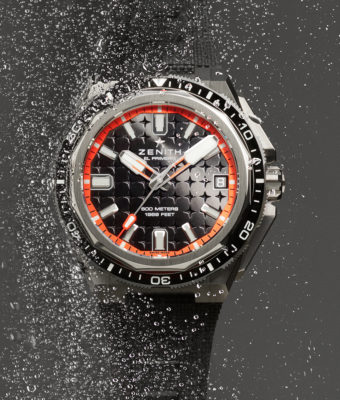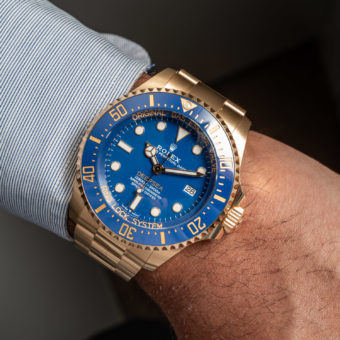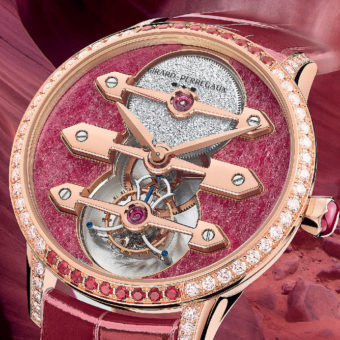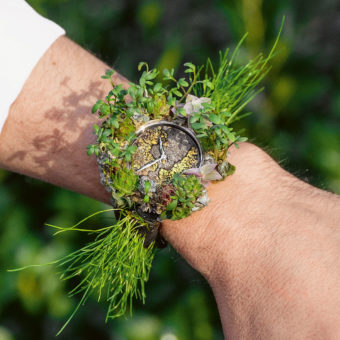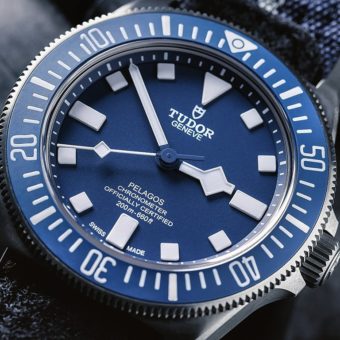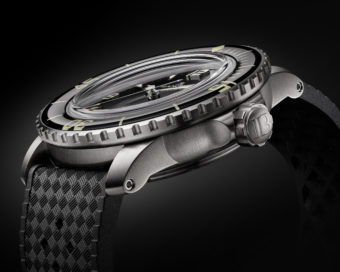
Captain Robert Maloubier’s life story reads like an action thriller that makes James Bond look like a milquetoast, and his exploits launched a chain of events that would result in the creation of the mechanical diver’s watch as we know it today. This is his story.
It was June, 1940. German Panzer tanks were closing in on Paris. Seventeen year old Robert Maloubier was headed 400 miles south toward Bordeaux on a bicycle along roads jammed with refugees who were easy targets for the Stuka fighter bombers overhead. He hoped to secure passage on a ship to England, but that plan failed, and he remained in France. Twice he crossed the demarcation line separating the occupied north from the free southern zone. Caught by the Germans, he was sentenced to two months in prison.
After his release, Maloubier joined the French armed forces, and in November, 1942, he found himself in Bizerte, Tunisia, surrounded by Germans. Maloubier escaped and headed for Algiers, 500 miles to the west, again on a bicycle, where the Allies had just landed. There he joined the Special Detachment (SD), a British underground unit and a branch of Winston Churchill’s Special Operations Executive (SOE).
In early 1943, Maloubier was transferred to England where he trained as a saboteur. In June, his training complete, he parachuted over Normandy behind the Atlantic Wall to organize French underground fighting groups. His group blew up a power station, a steel plant, and a submarine tender. Wounded and captured by Feldgendarms (German military police), he escaped and was flown back to England by an SOE “moonlight squadron” Lockheed Hudson bomber (so-called because the clandestine missions often meant landing by moonlight).
On June 7, 1944 – the day after D-Day – Maloubier parachuted over Limousin in central France. There he trained the maquisards (rural guerrilla bands of the French Resistance) and lead ambushes against the SS Panzer Division that perpetrated the June 10 massacre at Oradour sur Glane, where 642 inhabitants, including women and children, were killed. Again Maloubier was wounded and captured, and again providence took a hand as he was freed to take a band of nurses and German casualties to a French hospital.
In November 1944, Maloubier was sent to Asia when he joined Force 136, a branch of the SOE fighting Japan. After jungle warfare training in Ceylon and Calcutta, Maloubier was dropped over Laos shortly before VJ Day and wounded by an early Vietcong force. With his fighters, he held the province and became military governor, a post he held until relieved by Regulars in March, 1946.
Jungle warfare training in Ceylon.

Cpt. Maloubier in Japan, 1945.

Back in France, Maloubier joined the French Special Forces where he became an explosives, weapons and parachute instructor. Then it was off to England where he trained with the Royal Marines and Royal Navy in the Special Boat Service as a frogman and deep sea diver.
In 1952, Maloubier was stationed at Oran on Algeria’s Mediterranean coast. There, he established the Ecole des Nageurs de Combat, literally the Combat Swimmers School. The school would produce Les Nageurs de Combat – the Combat Swimmers – the French equivalent of the U.S. Navy Seals. Maloubier pioneered the group and served as its first commanding officer. The unit’s missions included intelligence gathering and planting explosives on enemy ships, usually at night.
Cpt. Maloubier exploring caves deep underground.

The lives of the men and their success as a unit depended on their equipment. In 1952, underwater diving was still in its infancy and the gear was primitive. It fell to Maloubier and his officers to design new and better equipment for the unit. “We had to start from scratch” as Maloubier put it.
Maloubier diving with primitive equipment in 1952.

Thus began a two year stint during which Maloubier researched, designed and tested new diving equipment. The goal was silent movement underwater and perfectly coordinated maneuvers among the divers in the sea at night. There could be no bubbles, no sound, and coordinated action – timing – among the divers had to be perfect. Nothing could betray the divers’ presence or endanger the mission.
“We designed diving suits, and fins that were much larger than those in use at the time. We designed diving goggles, and of course watches, because we were not satisfied with the watches that existed at that time…. With my second in command (Lieutenant Claude Riffaud) and another officer, we sat down at a table and said ‘OK, we have to devise a watch that can properly be used by us.’ So, one of us took a compass and a ruler and a pen and a piece of paper and we said ‘OK, what do we want?’”
The list they drew up and the drawings they made formed the basis for mechanical diver’s watches as we know them today. The list included:
- An oversize, waterproof case.
- A self-winding movement: “It should be automatic, otherwise when you wind the watch, even if you have a gasket, the watch leaks after a while.”
- Large, clear, luminous numerals, marks, and hands for easy reading underwater at night.
- A unidirectional rotating bezel displaying minute markers to let divers calculate the diving time.
Within a few hours over the course of an afternoon, the modern mechanical diver’s watch was born, at least on paper. It was not simply a waterproof watch, but one designed by combat divers for combat divers.
The next step was taking the watch from paper to production. “We looked all over the world for someone to manufacture this watch… There was no French watchmaker that would agree to do so…. We found Blancpain, a small Swiss watchmaker… Blancpain agreed to manufacture the watch. That’s how it all happened.”
For Maloubier, the next step was field testing. “The first prototype was sent to us. It was called the Blancpain Fifty Fathoms. They sent it, we tested it, and it was good. It was proper looking. This is what we wanted. … We tested it and it was OK. The first trial was very good. No problems. It never leaked. It was proper. We could read it at night, and so on. It was as we had drawn it.”




